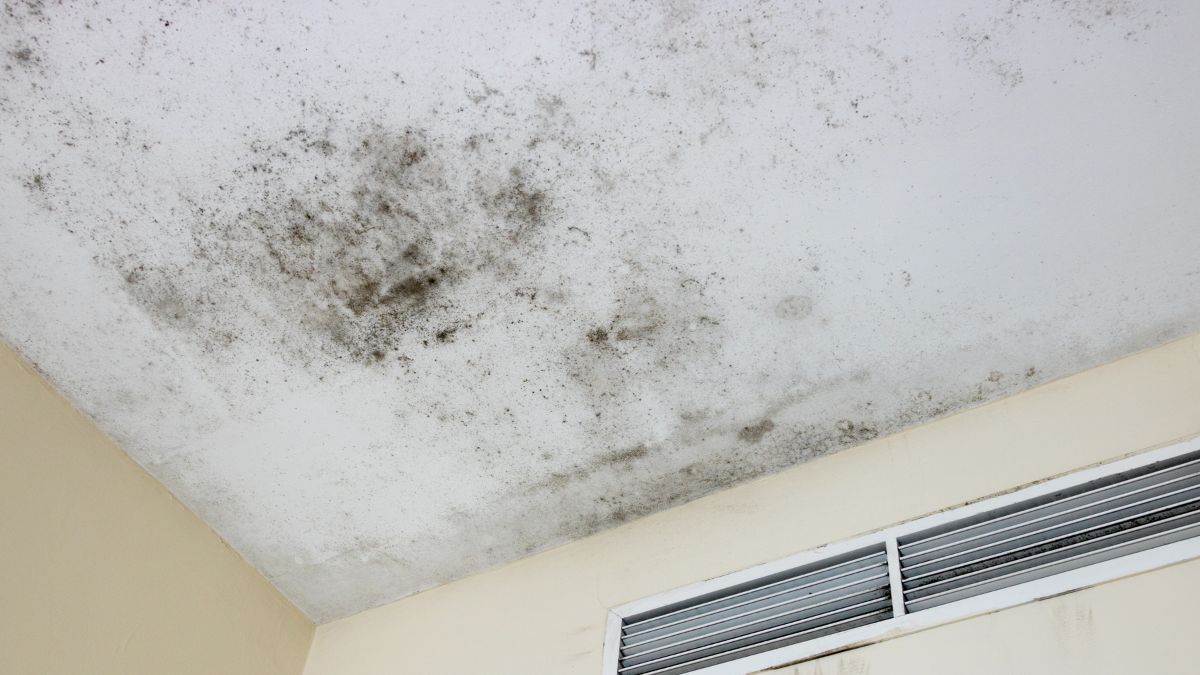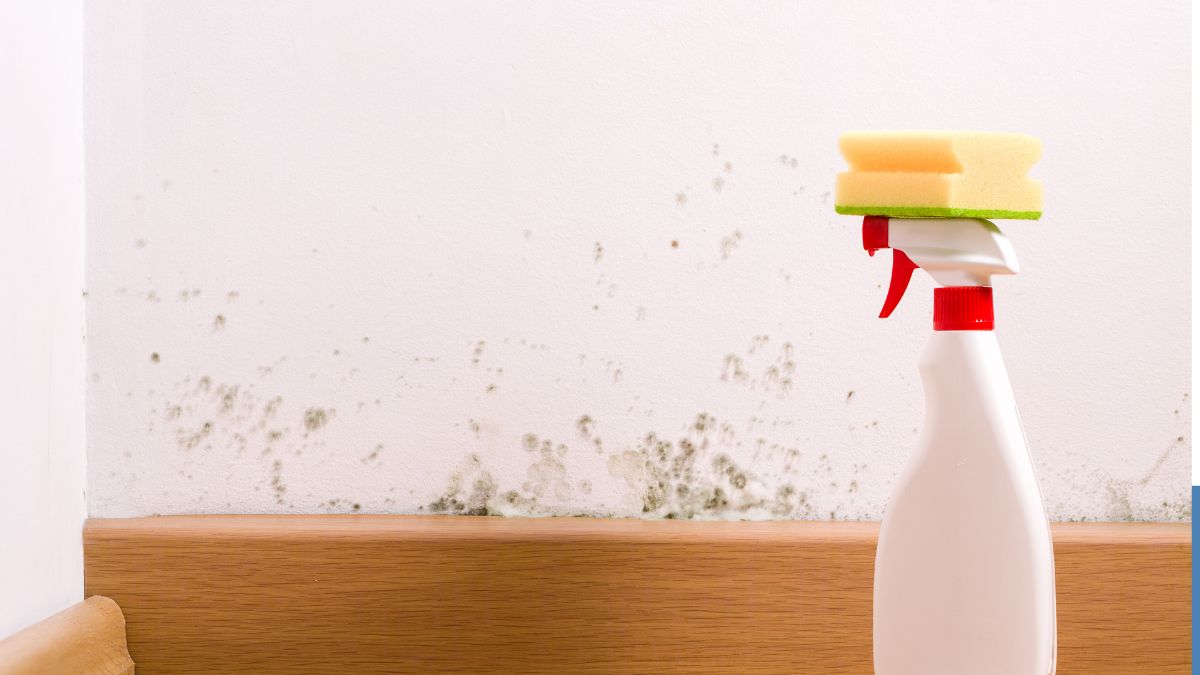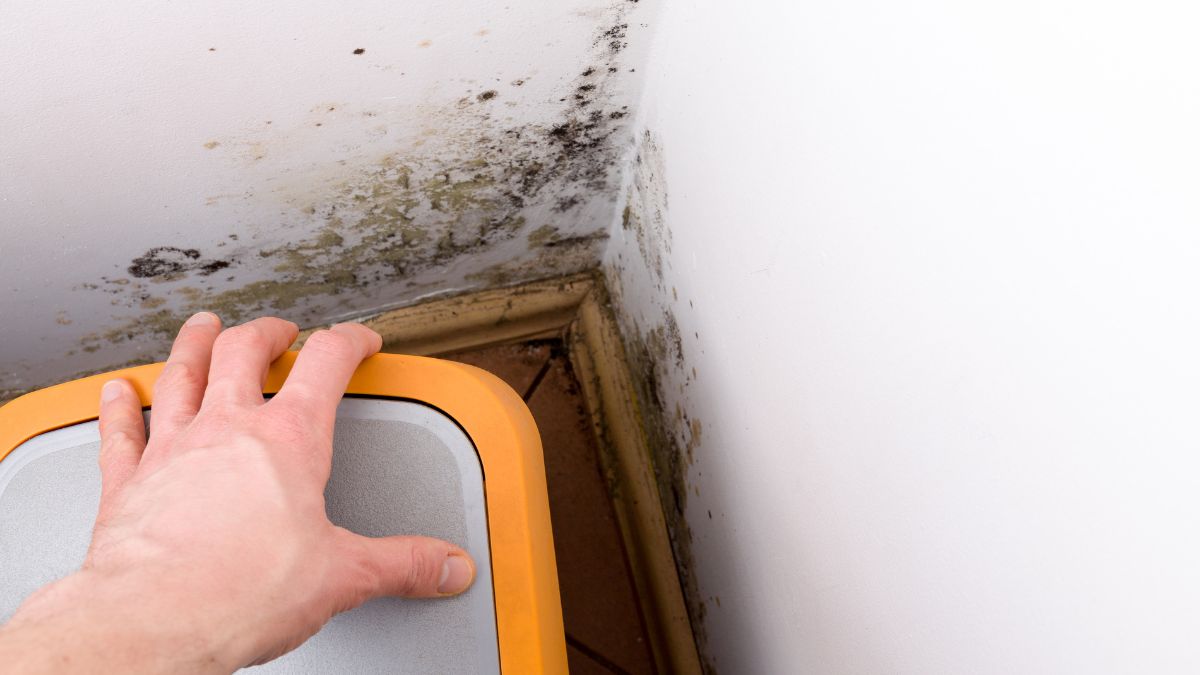
by Mold-B-Gone | May 22, 2024 | Black Mold
The presence of mold in your home can be a cause for concern. However, the severity of the issue depends on the specific type of mold present. While some molds may cause only cosmetic issues, others can pose significant health risks.
This article explores the key differences between black mold and common household mold to aid in proper identification and necessary action.
Health Risks of Black Mold
Black mold, particularly Stachybotrys chartarum, poses significant health risks. Exposure to its spores can lead to:
- Respiratory problems
- Skin irritation
- Fatigue
- Headaches
Individuals with mold allergies or compromised immune systems are especially vulnerable. The presence of black mold in your home should prompt immediate action to prevent these health issues.
Read more: Why Is Black Mold A Health Concern?
Appearance
One of thedifferences between black mold and regular mold is the color. Black mold stands out with its dark, greenish-black color, which often raises concern among homeowners due to its potential health hazards. In contrast, regular molds, sometimes confused with yeast, can appear in a variety of colors, such as green, gray, brown, or even black. This wide range of colors can sometimes make it difficult to identify mold type based solely on appearance.
Prevalence
Another difference between black mold and regular mold extends to their prevalence. Black mold is less common and is usually found in water-damaged buildings. It thrives in environments with chronic moisture issues, indicating a need for immediate attention and remediation. On the other hand, regular mold is more widespread and can be found in damp areas like bathrooms, kitchens, and basements.
Toxicity
Toxicity is another critical factor when comparing black mold vs regular mold. Black mold is particularly concerning due to its ability to produce mycotoxins. These toxic substances can lead to severe health problems. While regular mold can also produce mycotoxins, it is less common and typically less severe. However, regular mold can still cause allergic reactions and respiratory issues, especially in sensitive individuals.
Habitat and Texture
The habitats of these molds provide further distinctions. Black mold is common in very damp areas and often has a slimy texture. Its presence usually indicates long-standing moisture problems that require thorough inspection and repair. Regular molds, which can range from fuzzy to powdery in texture, typically flourish in any consistently damp environment, making them more common in households.
Ensure a Mold-Free Home
Recognizing the difference between regular mold and black mold is vital for maintaining a healthy home. While both types of mold require attention, the severe health risks associated with black mold necessitate prompt and professional remediation. At Mold-B-Gone Remediation, we offer expert mold cleaning services in Atlanta to address these issues. For a healthier home, contact Mold-B-Gone Remediation.

by Mold-B-Gone | May 8, 2024 | Mold Facts
Mold in the home can present itself in various colors. Recognizing these colors can help you identify potential risks and address mold issues promptly. Here, we explore the different types of mold colors commonly found in households.
Black Mold
Black mold is one of the most well-known mold color types, and it often incites concern due to its association with health risks. The most infamous is Stachybotrys chartarum, also known as toxic black mold. This mold thrives in damp, leaky areas like basements and roofs. It can produce harmful mycotoxins that lead to respiratory issues, headaches, and even blood poisoning.
However, not all black molds are toxic. Alternaria and Aspergillus are other types of mold colors that can appear black. While Alternaria is less dangerous, often exacerbating asthma, Aspergillus is a common household mold that usually doesn’t pose severe health risks unless found in large quantities.
Read more: The Truth About Black Mold!
White Mold
White mold is another frequently encountered color, often appearing fuzzy or powdery. Chaetomium is a type that prefers dark, damp areas and can emit a musty odor. Penicillium, which can sometimes appear white, is significant in medical history for penicillin but can cause allergic reactions if mishandled. Alternaria, which can change colors based on conditions, is another common white mold.
Yellow Mold
Yellow mold can be quite deceptive, ranging from pale to bright hues. Aspergillus can sometimes appear yellow, typically low-risk but requiring attention if found in large amounts. Serpula lacrymans target wood, threatening structural integrity rather than health. Epicoccum nigrum and Geomyces pannorum are other yellow molds that thrive in damp conditions. Particular caution is needed for yellow slime mold, an unrelated organism that is very toxic.
Red Mold
Red mold is often seen on water-damaged materials like drywall and particleboard. While the color red can appear in various molds, Aspergillus is a common culprit due to its prevalence. Neurospora is more likely the red mold found on food, indicating spoilage.
Green Mold
Green is the most common color for mold, with thousands of molds appearing green at some point in their lifecycle. The different types of mold colors that typically appear green include Aspergillus, Penicillium, and Cladosporium. While green mold is common, it is still essential to address it to prevent potential health issues and structural damage.
When in Doubt, Call in the Professionals
Identifying different kinds of mold colors can help you understand the potential risks and take appropriate action. Mold, regardless of color, can pose health risks and damage your property. For a thorough and safe solution, contact Mold-B-Gone Remediation, your mold remediation experts in Atlanta.

by Mold-B-Gone | Apr 23, 2024 | Indoor Air Quality
When pondering what mold smells like in a home, most people describe the odor as musty. Some liken it to an earthy or meaty scent, similar to wet socks or rotting wood. This distinct aroma is not solely from the mold itself but from microbial volatile organic compounds (MVOCs) released during various stages of its growth. These odors are typically unpleasant and pungent, alerting homeowners to potential mold issues hidden within their living spaces.
Tracing Mold’s Entry into Homes
Mold spores are ubiquitous in the environment and can enter homes through open doors, windows, vents, and HVAC systems. They can also hitch a ride indoors on clothing, shoes, and pets. Once inside, mold needs moisture to start growing.
Common sources of indoor moisture that may lead to mold include leaks in roofs, windows, or pipes, as well as areas with flooding. Homes with poor ventilation, especially in places like bathrooms, laundry rooms, and kitchens, are also at higher risk for mold development.
Common Molds in Residential Spaces
In residential settings, various types of mold can be found, each with unique characteristics and potential impacts on health. Some common indoor molds include Cladosporium, Penicillium, Aspergillus, and Stachybotrys, often referred to as black mold.
Read more: What Is Black Mold?
Cladosporium typically appears on fabrics and wood surfaces, while Penicillium might proliferate on wallpaper, fabrics, and insulation. Aspergillus is often found in house dust. Stachybotrys is notorious for growing on damp surfaces like drywall with high cellulose content.
Mold and Its Health Implications
The smell of mold can be more than just a nuisance—it indicates the presence of mold, which poses various health risks, particularly to individuals with pre-existing conditions such as allergies, respiratory issues, or compromised immune systems. Exposure to mold and its smell can lead to symptoms like nasal stuffiness, eye irritation, or skin rashes. More severe reactions include asthma attacks or more serious respiratory complaints. Particularly vulnerable are those who are mold-sensitized, as they might experience more acute symptoms upon exposure.
Ensuring a Healthy, Mold-Free Environment
Maintaining a mold-free home is crucial for ensuring the health and well-being of all residents. Regular inspections and prompt attention to any signs of moisture can prevent mold from taking hold. If you smell mold in the walls or the basement,it’s essential to address these issues swiftly.
For comprehensive mold remediation services in Atlanta, reach out to Mold-B-Gone Remediation. We specialize in mold remediation, offering tailored solutions for mold-sensitive individuals. Let us help you restore your home to a safe and healthy environment. Contact us today for mold cleaning services in Atlanta.

by Mold-B-Gone | Apr 10, 2024 | Mold Facts
Mold can be a persistent problem in homes, especially in humid environments. If you’re facing mold issues, understanding how to properly prepare for mold remediation can make the process smoother and more effective. This guide offers tips to prepare your home for professional mold removal, focusing on essential measures before the experts arrive to tackle the mold in your home.
Initial Steps Before Mold Remediation
Before the professionals arrive, there are several key actions you should take to ready your home for the process. First, it’s crucial not to disturb any mold-infested areas. Moving items or attempting to clean mold can spread spores throughout your home, complicating the remediation efforts.
To safeguard your health and that of your family, consider finding temporary accommodation. Just as you would secure a safe place for your pets during the remediation, it’s wise for you and your family to stay elsewhere.
Securing Your Home Environment
As part of your preparation, you should also take air quality samples. Knowing the specific types of mold present can help the professionals tailor their approach, ensuring a more targeted and effective remediation. Keeping your belongings stationary is vital, as even moving a small item can disperse mold spores.
Additionally, take photographs of all affected areas. These images can provide a before-and-after comparison and serve as documentation in case of any disputes or damages. This is a crucial step in preparing your home for mold removal.
Safeguarding Belongings and Living Areas
Another important aspect of preparation involves your personal items. Wash any clothing or fabrics that have been exposed to mold. Use hot water and regular detergent instead of bleach, which can damage delicate materials. After washing, seal these items in plastic bags to prevent recontamination.
During the mold remediation, your home will undergo extensive cleaning and possibly structural changes to eliminate mold sources and prevent future growth. Understanding this time frame and planning accordingly can help you manage the disruption to your daily life.
Ready, Set, Remediate!
As you prepare your home for professional mold removal, remember that the key is to minimize interference with the affected areas and safeguard your health by staying elsewhere. With these preparations, the remediation team can work more efficiently, ensuring that your home is mold-free and safe.
For the most effective mold solutions in Atlanta, trust the experts. If you’re dealing with mold issues, don’t hesitate to reach out to Mold-B-Gone Remediation. We specialize in comprehensive mold remediation, offering services that include IAQ testing and whole-house sanitizing. Let us bring our expertise to your doorstep and provide essential mold removal services in Atlanta.

by Mold-B-Gone | Mar 11, 2024 | Black Mold
Black mold… that nasty, insidious fungus that can invade your living spaces. It’s unsightly, potentially harmful to health, and something no homeowner wants to discover. Known scientifically as Stachybotrys chartarum, black mold is particularly notorious for its ability to produce mycotoxins. Understanding what invites this unwelcome guest into your home is the first step in safeguarding your health and property.
Moisture
One of the causes of black mold in homes is moisture—without it, mold cannot grow. Leaks in your home, whether from faulty plumbing, a damaged roof, or an aging air conditioning system, create the perfect breeding ground for mold. These leaks often go unnoticed until the mold has caused visible damage or health issues. Regularly inspecting your home for leaks and addressing them promptly can significantly reduce the risk of mold growth.
Read more: Why Is Black Mold A Health Concern?
Flooding
Another cause of black mold in a house is flooding, whether due to natural disasters or plumbing failures. Flooding can immerse your home in water, laying the foundation for black mold to flourish. The prolonged dampness that follows flooding often leaves materials struggling to dry out. This environment supports the growth of common molds. Further, it encourages the development of more dangerous strains, such as Stachybotrys chartarum.
A Breath of Stale Air
The third cause of black mold in homes is poor ventilation, which traps moisture and organic particles inside your home, creating a paradise for mold spores. Kitchens, bathrooms, and laundry areas are especially prone to this issue, as everyday activities add to the indoor humidity. Implementing good ventilation practices, such as using exhaust fans and opening windows, can disrupt the air, keeping it fresh and reducing mold growth potential.
Cold Surfaces Turning Wet
The fourth cause of black mold in a house is condensation. Condensation forms when warm, humid air meets cold surfaces, producing water droplets that mold spores adore. This phenomenon is particularly common in poorly insulated homes during the colder months. To combat this, ensure rooms are adequately ventilated to minimize temperature differences that lead to condensation, a precursor to the.
Breathe Easy Again
Navigating the challenges posed by black mold requires vigilance and an understanding of its root causes. Recognizing the symptoms of mold exposure in a house early can protect your health and your home from the insidious effects of mold. If you suspect mold growth or want to ensure your home remains a safe haven, consider a professional mold inspection in Atlanta. Our mold specialist in Atlanta specializes in restoring your home environment’s health.





